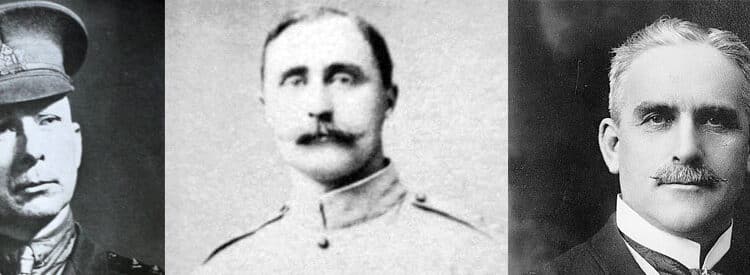By Terry Edwards
He is often called the Father of the American Sniper. Champion shot and brilliant soldier, his books are still read and loved. He is honest and even self-effacing about his role in the war, but his cover-up of the booze confuses and spawns many contradictions. To make it worse, he was the victim of a misguided official smear after the war. Following Herbert Wesley McBride is like jumping into Alice’s rabbit hole.
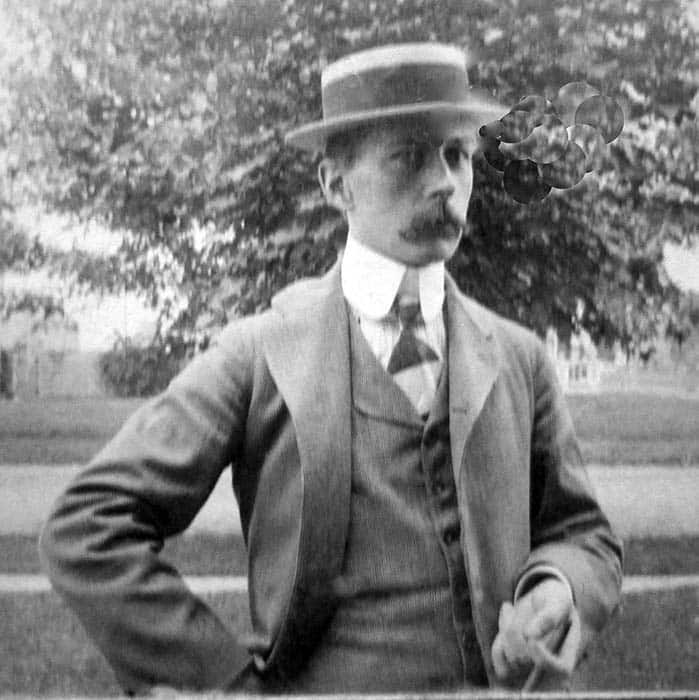
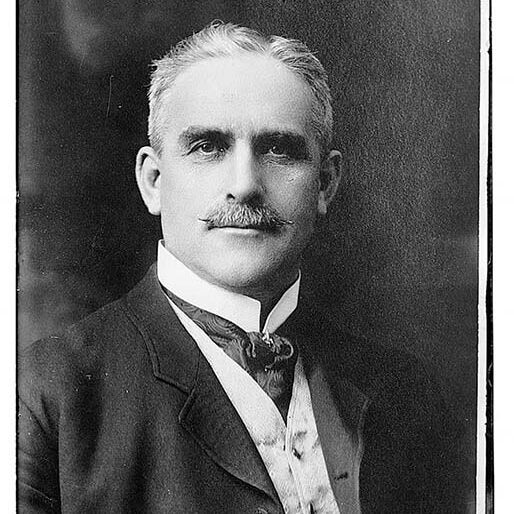
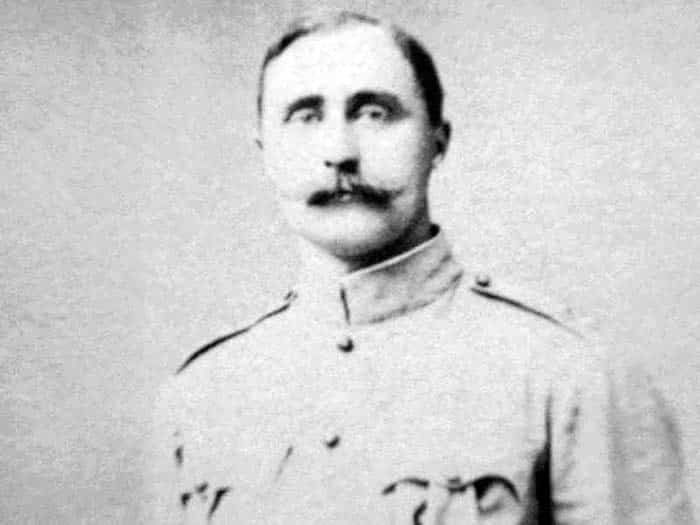
Both of McBride’s books are in the public domain and can be found online. The Emma Gees, published in 1918, is McBride’s story in World War I. His second and larger book, A Rifleman Went to War, appeared in 1933. Aside from great tales and advice, they reach out to grab and infect the reader with McBride’s raw spirit and leadership. As instruction for anyone going to war, they remain unsurpassed.
McBride was born October 15, 1873, in Waterloo, Indiana. His father Robert, his mother Ida, an older brother and two sisters, Robert’s war-widowed sister and her son and a maid filled the large home … an empty field today. Mac, as Herbert was later nick-named, was a sharp student. A surviving report card shows marks in the 80s and 90s. He called himself a “gun crank.” He never married, and he shares little about his personal life. He hunted with his father and greatly admired him.
Mac’s father, Robert McBride, was raised in Ohio by his widowed mother. Robert’s own father died in the Mexican War in 1847. In the Civil War, Robert rode in President Lincoln’s mounted bodyguard. After the War, he married and moved to Waterloo, Indiana, to teach school and begin a family. He became a lawyer, a circuit judge, businessman, Freemason and social leader. His lodge building houses the U.S. Marshall’s office today. He rose to Colonel in the Indiana Legion, fore-runner to the National Guard. Mac joined his father’s unit and made Sergeant.
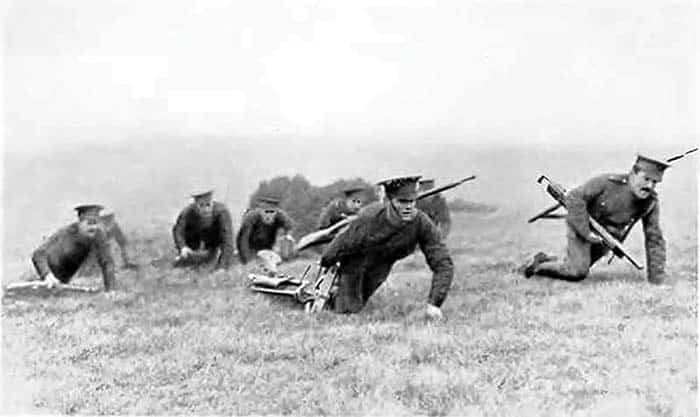
Robert sent his teenage son to Colorado to treat his tuberculosis and maybe satisfy his thirst for adventure. It only spurred him on. Mac eagerly injected himself into cowboy life, legal struggles and range wars, met several western legends, including Bat Masterton, and learned the secret to coping under pressure … “never get excited.”
While Mac was out west, his father was elected to the Indiana Supreme Court and moved the family to Indianapolis. Mac returned and worked for his father’s law firm in several cities, became a reserve officer and a highly competitive marksman.
In 1896, gold was discovered in the Canadian Klondike. McBride went, didn’t get rich, and in 1900, joined the Canadian Army to go to the Boer War. He was welcomed in but left when he found only British subjects could go overseas.
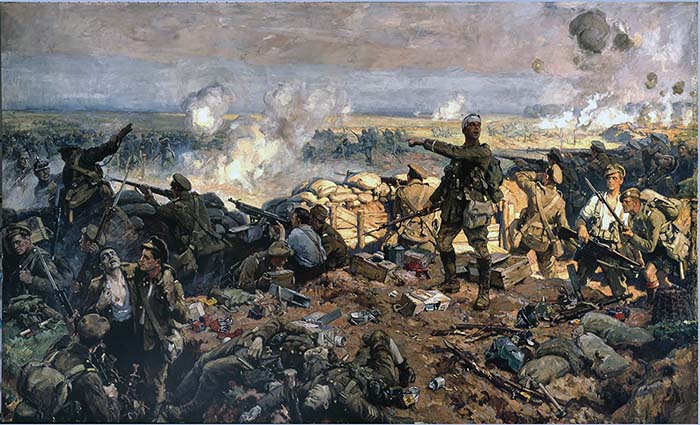
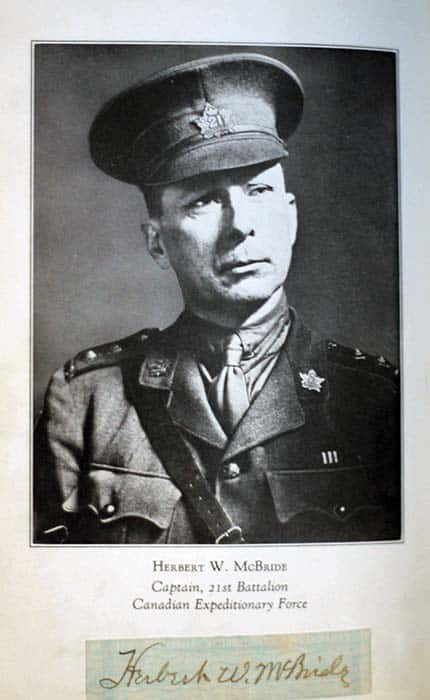
A man soon to shape McBride’s future was also trying to get to the war. Born in rural Ontario, his name was Sam Hughes … Just “Sam” because his father wanted to avoid the pretentious “Samuel.” That didn’t work.
Sam was a teacher in a one-room schoolhouse, tall, athletic, an officer in the Militia and a rabid Orangeman and Freemason. His older brother John would become a General, and his younger brother William was decorated in Canada’s North-West Rebellion (1885). Sam later used his influence to elevate William to Inspector in the federal prison system. Sam himself helped fight off the Fenian raids of the 1860s and 1870s. True to the times, the achievements of his sisters are unrecorded.
Sam bought a newspaper in Lindsay, Ontario, to better share his beliefs with the community and soon ran for Parliament. Many despised him as a bigoted bully, yet Hughes could also be appealing and compassionate. He made everyone he met believe they were special and was voted to Ottawa.
In 1899, Hughes was working to establish himself as his party’s military expert. The war with the South African Boers highlighted a problem; guns. Canada hadn’t bought the Lee-Enfield, even at the discounted price offered by the British War Office. With the war on, the British withdrew their discounted offer and insisted on equipping their own men first. Canadians went unhappily to South Africa to face modern Mausers with obsolete smoke-poles.
Hughes landed a guest posting with a regular army unit sailing for South Africa. The night before sailing, his already exasperated commander fired the arrogant Hughes. To avoid being left on the dock, Hughes paid his own passage.
In South Africa, Hughes convinced the British to give him a command. To the disgust of his critics, Sam proved brave and dashing in action … or, so he wrote home for publication. He was particularly angry over being denied the two Victoria Crosses he demanded.
Predictably, Hughes soon turned on his British benefactors and was fired again. He went home, lionized as a hero, and carrying grudges against both the Canadian and the British regular Armies.
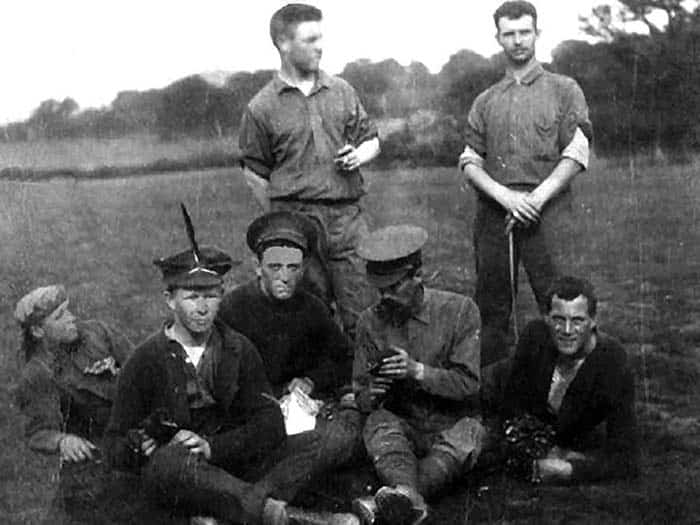
After the Boer War, it was assumed Canada would finally buy the Lee-Enfield. But, Canada had offered up her sons, and the British had refused them decent guns. Of course, the facts were different. The British War Office only said they couldn’t sell guns, let alone at a discount, until the British Army was equipped. Canada would have to make her own deals with the manufacturers. Their price was a lot higher, and Canada refused to pay. But, no politician ever let truth stand in the way, and Hughes nationalistically championed the Ross.
It has been reported Hughes met Sir Charles Ross in South Africa and saw the Ross Model 1897 rifle in action. There is no proof of this; although Ross was certainly there and likely had one or more of his guns.
The distinguishing characteristic of the Ross Model 1897 was its straight-pull action. It owes much to Ferdinand Ritter von Mannlicher’s Model 1895. The Austrian Mannlicher, the Swiss Schmidt Rubin and the Danish Krag, adopted by the U.S in 1892, all used straight-pull designs. By the time Hughes championed it for Canadian service, Ross had already redesigned the gun to eliminate the early hammer ignition of the 1897. His commercial Model 1900 incorporated a striker propelled by a coiled mainspring, and this appeared in the 1905 Mk I.
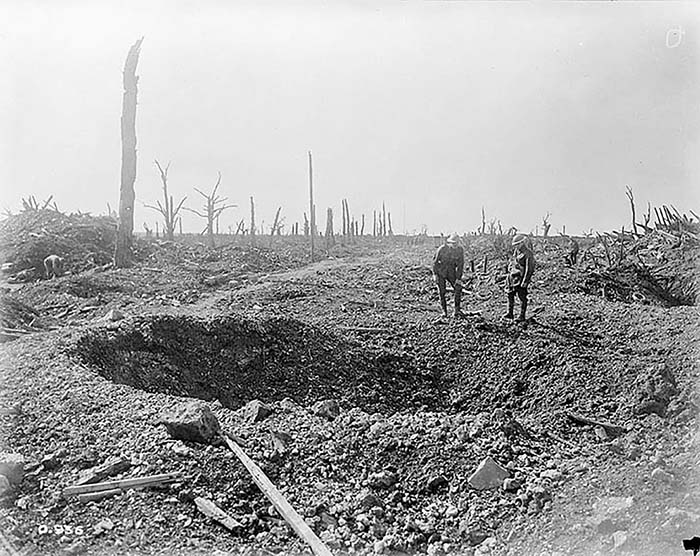
Ross was born in 1872 and grew up fascinated with gun design. He equipped a machine shop in the family castle as a boy. At Cambridge, he studied engineering and was such a natural he hardly needed to attend class. That left him time for his two yachts. He kept them tied up near school where he supported the arts by mentoring young actresses. Sir Charles was an avid hunter and an officer in the Seaforth Highlanders. As Britain’s wealthiest man, he could afford it all.
Ross established the Ross Rifle Co. in a Connecticut factory. Sam Hughes, although in the opposition, led the charge for Canada to buy the Ross. Soon, the train was rolling and to oppose the Ross was unpatriotic. The horrified British had already turned the gun down and tried to bring Canada to her senses.
They were too late. Sir Charles packed his plant off to Quebec. While this was catastrophic for some workers in Connecticut, most of the parts were subcontracted, and the American firms now shipped parts to Quebec.
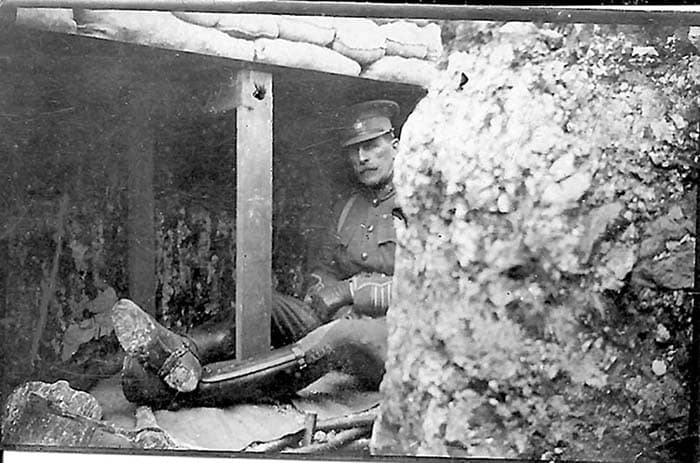
The first Ross rifle to enter Canadian service was patented in 1903 as the Mk I. The integral Harris magazine held five .303 rounds and a “cut-off” restricted firing to single shots to conserve those in the magazine for emergency. A large thumb-operated lever depressed the magazine follower to allow easier loading. Care still had to be taken to place the rim of each cartridge in front of the one below to prevent a double-feed.
The straight-pull action has inherent disadvantages. Most high-caliber gun designs employ “primary extraction” because the cartridge case expands in the chamber on firing and tends to stick. Primary extraction moves the casing back a short distance while usually twisting it slightly. This done, the case can be easily extracted. While all this activity can be engineered into a straight-pull design, it is more simply done in the upward stroke of a turn-bolt handle. And, on the loading motion, the downward stroke of the bolt handle provides greater leverage to seat the next round and lock the action. This fundamental weakness would prove critical in the Ross. The extractor saw numerous modifications until a reinforced version was introduced in the Ross Mk II rifle.
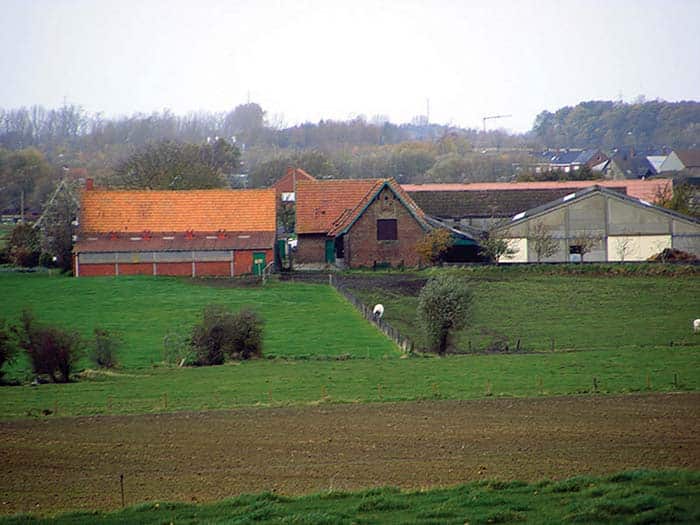
The earliest guns may have gone to Canadian Fisheries followed by 1000 guns to the North-West Mounted Police. These ‘Carbines’ had 26-inch long barrels and lacked the bayonet attachment which might snag in a horse scabbard. The Mounties soon traded the Ross back for their Winchesters and Lee-Metfords. These are rare today because most were destroyed in an Alberta warehouse fire soon after being recalled from service. Forgeries abound.
The next group went to the Canadian Army. Numerous flaws soon showed up in design and quality control. Tales of sights and bayonets coming loose are exaggerated, while the stories of mis-assembled bolts flying out apply only to commercial rifles and the later Mk III. It is a very difficult situation to arrange, and at worst the bolt can only go back until stopped by the bolt stop.
The receiver was redesigned, and in 1905 a new version with a 28-inch barrel was patented as the Mk II. This model saw continual development from 1905 to 1911. The Mk II** had a 30.5-inch barrel specifically for target work and was disqualified at first at Bisley because the longer barrel prevented the gun from accepting a bayonet. The emergency addition of a new lug solved this on the spot. Numerous modifications were made to the standard 28-inch barrel Mk II and not reflected in model designations. When the Mk II ***** was reached, development ended. In 1917 the United States bought 20,000 Canadian Mk IIs for training. These can be identified by the flaming bomb stamps on their stocks. Any Mk II snipers encountered are not factory-made. Only the Mk III sniper (covered in the next part of the article) is considered authentic.
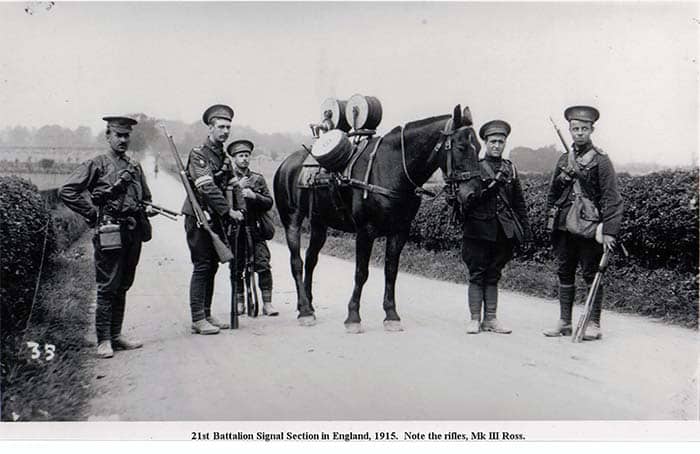
The Mk III military rifle was patented in 1910 with a new look and a longer 30.5-inch barrel. It was issued from 1912 on; although 1913 is the first date observed. The vertical locking lugs of the Mk I and Mk II were eliminated in favor of a series of teeth, similar to interrupted threads, which travelled horizontally in the receiver. This had first been introduced in the commercial “Deerstalker.” Cock-on-closing gave way to cock-on-opening, and the early staggered stack magazine was replaced by a single-stack box loadable by stripper clip. Better in many ways, the Mk III was also made heavier, longer and clumsier by various government demands.
Home from the Klondike, the restless McBride moved from city to city working for his father’s law practice. He served in several National Guard units and was a Captain by 1907. He was also the Indiana state rifle champion in 1905, 1906 and 1907 and an expert with the Colt 1911, Gatling gun and Colt 1895. Off the ranges, he served as the Indiana Secretary for the National Rifle Association.
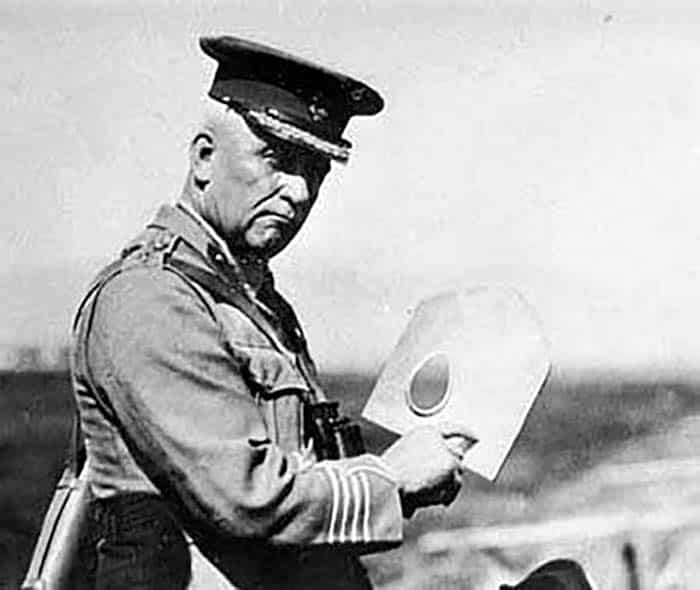
McBride doubtless saw the Ross rifle in international competition. Ross Mk II rifles in .303 won many matches before World War I.
In 1907 Ross first offered his new .280 cartridge in the also new Ross “Scotch Deerstalker” sporting rifle. This was basically a heavy barrel Mk II** with the interrupted thread locking system soon to appear in the Mk III. The rimless .280 propelled a 140-grain bullet at over 3000-fps. Ross had hoped the .280 would be adopted throughout the British Commonwealth. World War I made any such change impossible.
In 1913, the Canadian team showed up at Camp Perry with .280 “Military” rifles Ross made up in Mk III military configuration. They weren’t issue, and the team wasn’t allowed to use them. One was displayed in the NRA collection. It has a flat floorplate instead of the usual visible magazine.
Politically, Sam had astutely supported Robert Borden, an up-and-comer who became Prime Minister. Sam’s reward was appointment as the Minister of Militia and Defense in 1911. But, as a Brigadier General in the militia, he was out-ranked by his own General Staff. The Minister promoted himself to Lieutenant General to outrank them all.
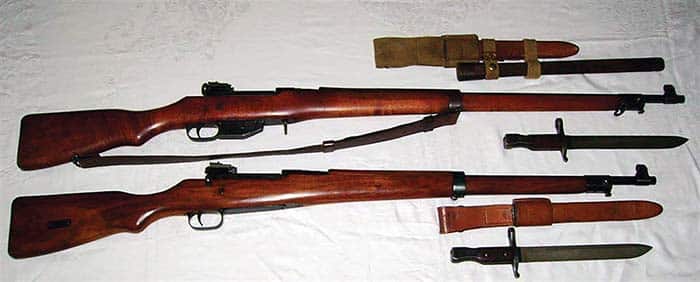
In 1914, McBride was scouting for the railroad in western Canada when he heard the United States was sending a force to Mexico. Mac rushed home and took command of a National Guard company. They trained all summer but were never called. Then, an Austrian Arch-Duke was killed in Sarajevo and in August 1914, Europe fumbled into war bringing Britain and her Commonwealth with her.
The General Staff of the Canadian Army had an elaborate mobilization plan. It would unfold automatically and finally make the irksome Hughes irrelevant. Hughes saw the trap. He informed the nation the regular Army would not mobilize and an Expeditionary Force of militia would go overseas instead. Regular officers rushed to transfer to the militia. All had to be personally approved by Sam, and this opened the door for McBride.
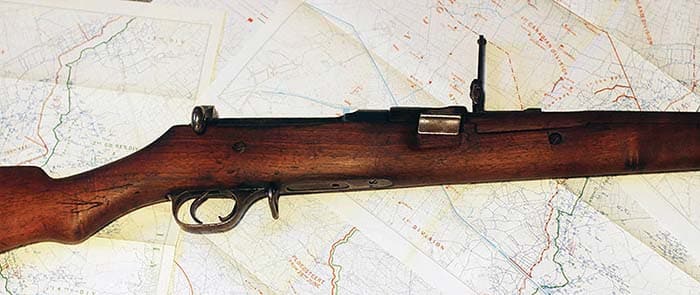
Hughes hired his officers, opened training bases, ordered equipment and seemingly organized Canada’s war effort single-handedly. His hasty contacts for equipment resulted in some poor quality goods and doubtful designs. He was accused of corruption but was only guilty of bad judgement. Canada declared war on August 4, and the 18,000-man Canadian Expeditionary Force landed in England on October 14, 1914.
McBride had to resign from the National Guard before he took the train north in January 1915. He by-passed the crowded border recruiting stations, going straight to Ottawa to present himself at the office of Lieutenant General Sam Hughes. Hughes welcomed the brash American with an Officer’s commission. Until McBride’s unit formed up, he would serve as a weapons instructor for Lt. Colonel William S.P. Hughes. Ninety miles south in Kingston, Hughes’ younger brother was training his 21st Battalion for France.
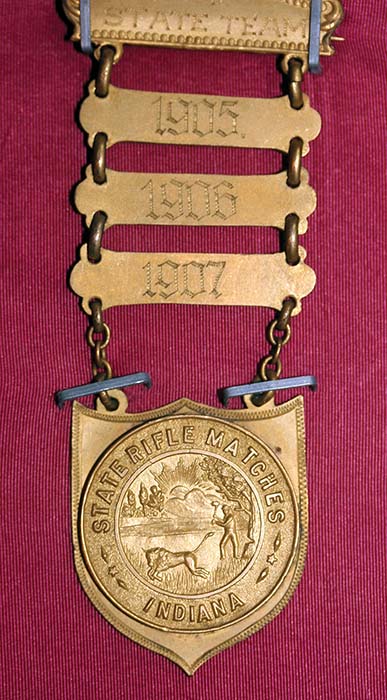
Canadian winters can be brutal, and cold days usually ended in the officers’ mess. Sam had campaigned for a dry militia but once elected, let commanders do as they chose. Most commanders, William included, let the men choose. Unfortunately, McBride chose too much.
Colonel Hughes sent a note to General Hughes. The Colonel asked Sam to recall McBride to Ottawa. It is unlikely McBride was ever aware of the note. McBride thought he was being recalled to go to the front. When he learned he was going to Bermuda, he says he kicked up enough fuss to get himself thrown out.
Months later, McBride’s puzzled father wrote Sam Hughes asking why his son was now a private … and in a machine gun section. He asked if liquor was involved.
General Hughes asked for a report. McBride’s commander in Ottawa recounts how McBride acquired a horse and, before several hundred admirers near Parliament, mustered an impressive one-man show to announce he hadn’t joined to guard some tropical island.
His new commander was part of the audience. When McBride came to morning parade, two days later, he was dismissed. Several days after that, the Colonel found McBride in a hospital and took his resignation. He confirmed Robert McBride’s suspicion that liquor was involved.
In his books, McBride writes he called Colonel Hughes and asked if he could join the 21st in the ranks. He says Colonel Hughes was happy to have him. The books don’t mention it, but the Colonel must have added … with the Minister’s approval. McBride visited Sam’s office again. A sympathetic General Hughes gave McBride another chance.
Back in Kingston, McBride was assigned to the machine gun section commanded by another American, Hugh Norton-Taylor. The early machine gun sections were traditional catch-alls for misfits, but McBride actually knew something about the guns.
Canada was an early adopter of the belt-fed Colt M1895 gun, buying it in .303. The gun was never known as user-friendly but a skilled and gentle hand was rewarded with excellent performance. Most battalions had four Colts. The 21st sailed with two extra, purchased by Colonel Hughes’ prison system colleagues.
Every man wielded an Mk III Ross rifle, with some unease. Overseas, the gun had jammed in close combat during the Second Battle of Ypres. It was claimed the rifle was too finely made to tolerate mud and rough handling. There is truth to this, but the fatal flaw was a specific and avoidable mistake. Before the war, the British re-designed the .303 cartridge, rechambering their Lee-Enfields to a slightly larger size than the Ross. Canadian experts said the chamber of the Ross was already large enough to take the new British ammunition in a pinch, and the tighter fit could only increase accuracy anyway. The chambers were not reamed out. It was all about the money. Besides, the experts said, the men would have Canadian ammunition of the right size, so it hardly mattered.
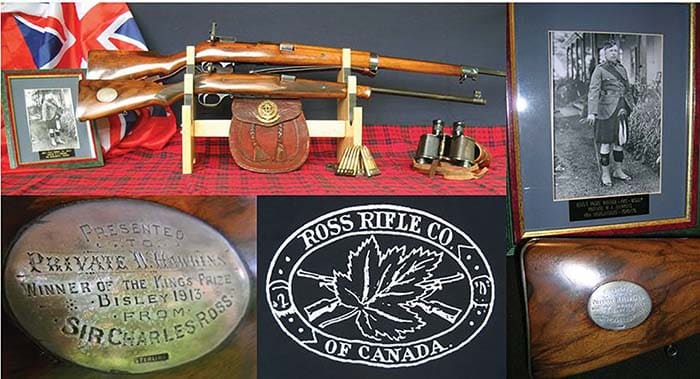
But, the British Army took all the Canadian-made .303 ammunition away from the first Canadian troops when they arrived in Britain and issued it to their machine guns at the front where it worked quite well. The poorly made British ammunition issued to Canadians in return was responsible for the tragic story of the Ross to follow.
The 21st Battalion set sail on May 6, 1915, a day before the Lusitania was torpedoed. On the news, McBride and Art Redpath were ordered to lash their Colts to the rails. The show of force apparently worked, and the Battalion landed safely at Plymouth, England.
The 21st went to West Sandling, a training camp for the Second Division close to the English Channel. Instructors fresh from the trenches brought the 21st up to speed. McBride says they sawed down the legs of their Colt tripods.
The Battalion crossed the channel on September 15, 1916. They set out for Ypres in Belgium. McBride was now a Lance Corporal in charge of Gun Number Six.
In McBride’s loader and good friend was William Emmanuel Bouchard, born 1893. Another crewman was Bruce Shangrow. He lied about his age and joined at 16. He got home. Coney McFarlin was 19 when they landed in France. He was hit by shrapnel, gained a limp and lost part of a finger a few months later. The same grenade killed Sam Comego. Charlie Wendt was shot, age 21, near Captain’s Post in 1915 and died later at Casualty Clearing Station No. 3. Arthur Toms had a run-in with an ammo limber shortly after they arrived. He rejoined the gun crew for Christmas. He would be 20 when he and Bouchard disappeared September 16, 1916. McBride’s friends Sandy McNab and Art Redpath were both wounded in October and sent home.
Ypres is 25-miles from the English Channel. In the initial German attack, it was occupied and then abandoned. When the Germans were forced back, they realized Ypres blocked them from the Channel. Ypres was suddenly vital to the Allied supply lines and soon took on symbolic value for the amounts of blood spilt. McBride’s battalion filed into the trenches stretching southwest from the village of St. Eloi.
This sector was shaped by a failed German push to the southern outskirts of St. Eloi. The stab had ended in a ponderous mass of German sandbags called “The Mound.” The front line was at its narrowest here, a bare 70 yards of blood-soaked mud.
Colonel Hughes stationed McBride’s machine gun section in the ruins on his right. The body of a French sniper in the rubble gave the place the name Sniper’s Barn. The barn and farm exist today in their rebuilt form.
The trenches ranged across and down the slope into no-man’s land. Across 200 yards of swamp, the ground rose again up to the German trenches. Wire had been strung and wrecked, trenches dug and destroyed, and many lost bodies festered in the mud.
One of first things the men at Sniper’s Barn noticed was a blue and white flag just in front of the enemy line. The outgoing British commander told Hughes it had been captured earlier by French troops and flown from the Allied trenches to taunt the Germans. But, after the British took over, the Germans recovered it. The flag was booby-trapped, and Hughes ordered no one was to attempt to get it without his written permission. To McBride it was a red flag to a bull.
To be continued…
Thanks to Al Lloyd, Barry Delong, Carol Mintoff, Dan Shea, G. N. Ted Dentay, Gary Flanagan, George McBride Hoster, James Samalea, Lisa Weder, Michael Leonard, (reprints of “The Ross Rifle Story” see ross.rifle.story@sympatico.ca), the late R. Blake Stevens, late Geoff Winnington-Ball and late Michael D. Edwards, Library and Archives Canada, the Canadian War Museum and Movie Armaments Group.
The author has written numerous articles for Soldier of Fortune, Small Arms Review and Small Arms Defense Journal. His books are available on Kindle.
| This article first appeared in Small Arms Review V22N8 (October 2018) |



